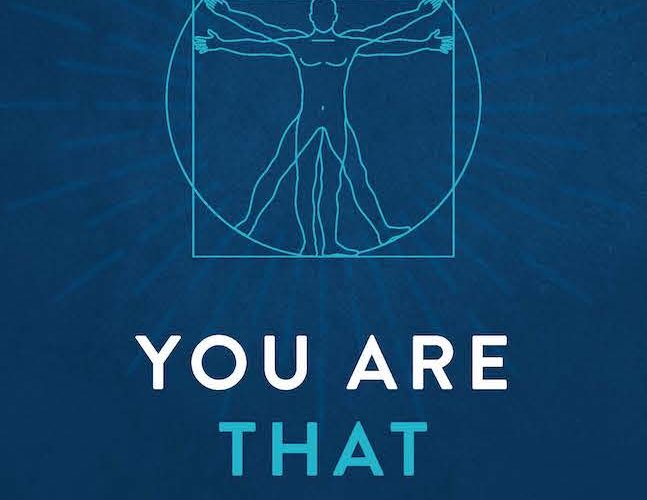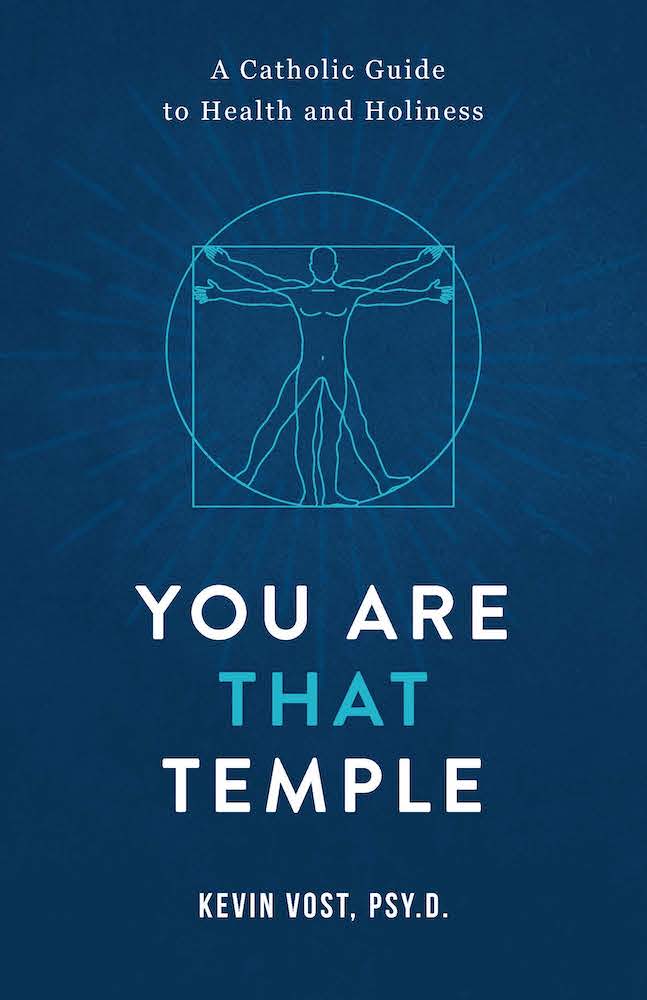For anyone of any faith who worries about health issues should pick up and read slowly but surely You Are That Temple: A Catholic Guide to Health and Holiness by Kevin Vost. True, the book is lengthy because the author delves into several aspects of food, such as overeating; exercises to keep the body strengthened; and faith, to understand God’s plan for the human body.
Yet as Vost writes, “I hope and pray that we will all find ways to keep healthy and holy, while exercising great care and gratitude for all of God’s green earth: ‘For God’s temple is holy, and that temple you are’ (1 Cor. 3:17)….Jesus came not to destroy the bodily temple, if you will, but to fulfill it. He showed us the way to perfection of our entire being, heart, soul, mind, and strength, which includes our physical bodies — bones, sinews, and all.” And he notes that St. Thomas Aquinas spoke often about bodily health.
Dividing the text into three parts—Part I, Preparing the Ground for Our Temple; Part II, Collecting Building Materials; and Part III, Temple Building Instructions—Vost approaches the way people should generate bodily health. As he notes, “Church Doctors have long classified five of them as spiritual sins (pride, avarice, envy, wrath, and sloth) and the last two (lust and gluttony) as corporal or physical, bodily sins. If we are to glorify God in our bodies, we must avoid the corporal sins that directly dishonor the body, and we must also avoid using our bodies as vehicles to carry out actions prompted by spiritual sins.”
The corporal sins Vost focuses on are gluttony (eating way too much) and sloth (laziness, inactivity, and inertia), though Vost notes that sloth can also refer to spiritual sloth, or believing that “God, I don’t Care!” But he certainly points out that gluttony is a major health issue, noting that St. Thomas Aquinas said that gluttony “is an inordinate, un-reasonable desire for food that can entail more than simply desiring to eat too much,” Vost says. “There are different “species” or varieties of the vice of gluttony that include the tendency to eat too much but also include the habit eating too greedily by wolfing down our food, eating too hastily by eating too often… as well as eating too sumptuously or too daintily, demanding gourmet foods while showing ingratitude for plain and simple fare.” Vost also writes that gluttony can be a deadly sin because focusing too much on food turns people’s attention away from God.
He also explains that obesity can have associated metabolic disorders that include diabetes, which has spiraled upwards in that past few decades, and a condition known as “nonalcoholic fatty liver disease.” These conditions, he notes, make people more vulnerable to harm from pandemics.
But he stresses over and over, people can live and live well by eating the food that God, not food industries, has provided for us—natural, unprocessed foods, real whole foods—proteins, fats, and natural carbohydrates—that come from forests, pastures, and farms. Ideally, the recipe and instructions for most of the foods should look something like this: “Rinse, cook, and eat,” or perhaps, at its simplest, merely “Eat!” “This means that if we eat mostly real foods, such as meats, including chicken and fish; eggs; cheese; vegetables; nuts; and fruits, we can often eat and enjoy them as God made them, on their own,” he writes. “Of course, we can add relish to our foods, and to our lives, by cooking, combining, preparing, and seasoning our foods in nutritious, delicious ways.”
He notes that the artificial foods manufacturers make are damaging God’s temple, our bodies, by creating edibles by “ultraprocessing” them. Thus, he quotes Ezekiel 4:9, And you, take wheat and barley, beans, and lentils, millet and spelt, and put them into a single vessel, and make bread of them. After all, Vost writes, “We were created to eat them, and they were created to be eaten by us (see Gen. 1:29–31; Acts 10:9–16). And this is exclusively all that we ate, from Adam and Eve on down …”
Vost wraps up his health plan suggestions by recommending fasting, as did Jesus, who fasted for 40 days, and by urging readers to exercise to build needed muscles to sustain the body. And in Part III, he recommends three physical activities people should consider practicing—well, at least one of them regularly—such as pulling movements, such as chins, pull-downs, and bent-over rows that work upper back, shoulder, biceps, and forearm muscles; squatting movements that work the muscles of the thighs and hamstrings, the buttock, the hips, the lower back and the calves; and hinging movements, such as dead lifts that make most body muscles keep proper body alignment.
But perhaps with all of Vost’s in-depth suggestions to help readers align with God and bodily health, his most memorable—and beneficial—words may be these: “I’d boil it down to three words: ‘Eat real food!’”
✠
You Are That Temple is available from Sophia Institute Press.












